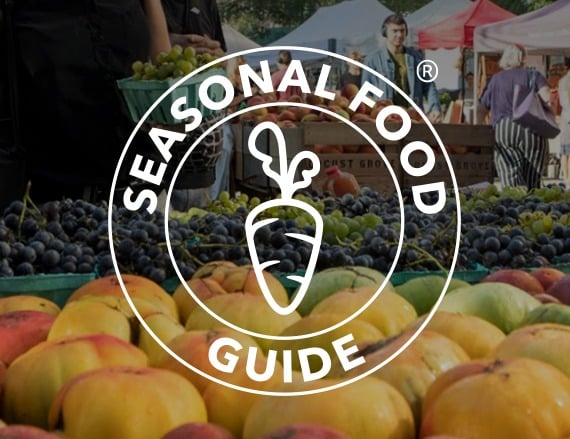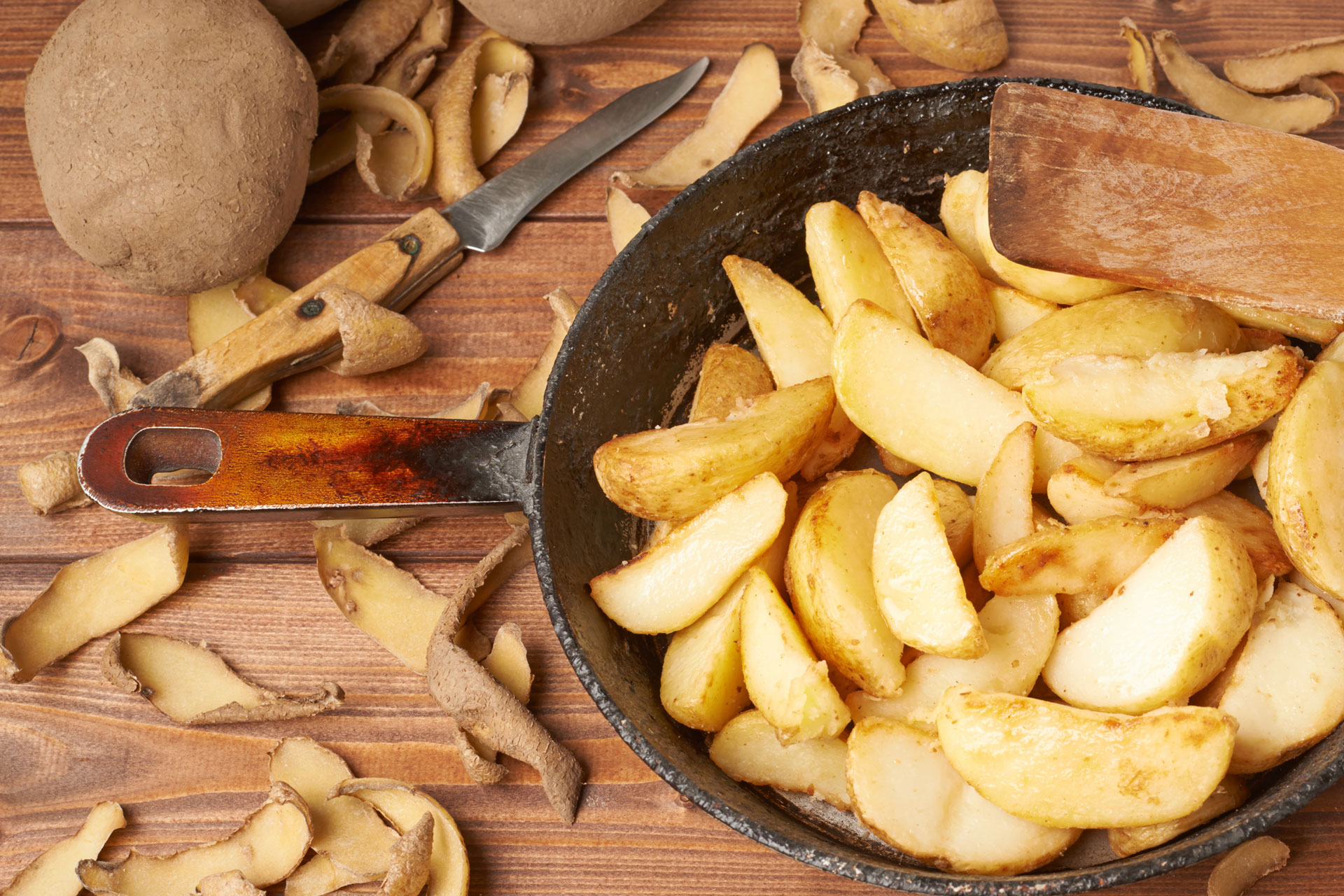Real Food Encyclopedia | Potato
Is there anything more comforting than potatoes on a blustery fall day? From mashed to fried, potatoes (Solanum tuberosum) are satisfying, hearty and so delicious.
The little homely tuber has a very rich and complicated history. Potatoes originated in the highlands of Peru (although Chile disputes this!); “The Oxford Companion to Food” author Alan Davidson notes that there is evidence that the vegetable was cultivated there at least 2,000 years ago. The Spanish were the first Europeans to encounter the tubers, in the 16th century in Columbia, and soon after potatoes were introduced to Spain and Italy, and later in the 16th century to the British Isles and possibly to India.
They didn’t catch on right away in Europe — in part because the varieties imported from South America weren’t adapted to European climates, but also due to the potato’s botanical similarity to deadly nightshade. However, by the 17th century, potatoes were a critical component of the Irish diet (and were just starting to catch on elsewhere). A variety called the “Lumper” was monocropped in Ireland and, according to Davidson, the average Irish peasant consumed between seven and 14 pounds of potatoes per day. By the 18th century the tubers were being promoted by official decree in a number of European countries and had begun to become popular all over the continent and then the world, eventually becoming a staple component of many countries’ cuisines. In the 1840s, potato blight struck Ireland, and for a number of complicated reasons (only some of which having to do with the potato), a devastating famine was triggered. The Irish potato famine (or “Great Famine”) killed about a million Irish, and a million more emigrated to the U.S. and other countries.
Fun facts about potatoes:
- According to the International Potato Center, there are more than 4,300 varieties of native potatoes, most of which are found in the Andes Mountains. There are also over 180 species of wild potatoes (most of which are not edible — one of these was responsible for the death of Chris McCandless, the controversial figure whose death in the Alaskan wilderness was the subject of the book and film “Into the Wild“).
- The first French fries were served at the White House, under our first foodie president, Thomas Jefferson.
- Potatoes weren’t introduced to North America until 1719.
- A plant pathogen, called Phytophthora infestans, caused the Irish potato famine. In May 2013, the exact strain of the pathogen was finally discovered.
- Heirloom potato varieties include: Rose Finn Apple, Banana, Purple Majesty, German Butterball, Mountain Rose and many more.
What to look for when buying potatoes
We used to be limited to just a handful of potato varieties; there was a time when all one could find on the grocery store shelves were russets (baking potatoes) and maybe red (aka “new”) potatoes. Fortunately, it has become easier these days to find fun varieties of potatoes in a wide range of shapes and colors at the farmers’ market and even at conventional grocery stores. Potatoes are generally classified by color, texture and sometimes by shape. Here are some examples:
- Russets (aka “baking” potatoes) tend to have a “dry” texture
- Red potatoes tend to be waxy or creamy
- White potatoes tend to be creamy
- Yukons (aka yellow potatoes) tend to be a bit waxy and rich
- Purple potatoes tend to have a “dry” or “floury” texture
- Fingerlings are finger-shaped or oval; different varieties have different textures
Potatoes vary wildly in size and shape, but in general, look for tubers with no black, mushy or spongy spots. Also look closely at the skin: If it has a greenish tint or if the eyes have started to sprout, take a pass.
Sustainability of potatoes
Pesticides
Unfortunately, there are some serious environmental concerns with potato production. The tubers rank pretty high (at number 11) on the Environmental Working Group’s Guide to Pesticides in Produce.
In a fascinating essay for Smithsonian Magazine, Charles Mann argues that potato cultivation “set the template” for today’s modern intensive industrial agriculture, starting in the late 19th century. Potatoes have the distinction of being one of the first crops to be intensively monocropped, and Mann notes that potato cultivation started the use of unsustainable fertilizer, in the form of nutrient-rich bird guano harvested from remote islands off the coast of Peru. Finally, Mann contends that potato production frames the creation of the modern era of ever-increasing pesticide potency and utilization, first starting with potent arsenic compounds used to fight devastating Colorado potato beetle infestations.
Fast forward to 1920s Idaho, where J.R. Simplot founded his company (now called simply Simplot) in 1929. Simplot’s company is now one of the world’s largest agribusinesses. The company grew during World War II by supplying the U.S. government with potato products, and grew even larger when they developed the first commercially available frozen French fry, eventually destined to be the primary supplier of frozen fries for McDonald’s. (They now produce everything from turf to beef products.) Simplot also mines its own phosphate for agricultural production, and came under fire in 2012 for selenium pollution, which is a byproduct of their mining operation.
Sadly, only the types of input have changed from the earliest days of intensive potato production: Instead of harvested guano for fertilizer, potato companies (unsustainably) mine phosphorus; instead of arsenical compounds to control pests, a staggeringly diverse list of pesticides (including insecticides, fungicides and herbicides) is used (here’s a list from Washington State); and potatoes are still intensively monocropped in the U.S. and around the world. If you’re concerned about any of these issues, try to buy locally produced potatoes, and check with your local farmer about his or her growing practices.
Seasonality
There are early-season, mid-season and late-season potato varieties, making the veggie one of the few that is legitimately available almost year-round, even when grown locally. And because potatoes can be stored for several months, the tubers can be found at markets even in the dead of winter.
Geography
According to the USDA, potatoes are the most important vegetable crop in the U.S., and are the fourth most important food crop in the world. Idaho and Washington State produce the most potatoes in the U.S. (primarily the Russet Burbank variety) while China, India, Russia and Ukraine are tops in world potato production. 60 percent of potatoes grown in the U.S. are used for processed potato products, including French fries, chips and other products.
Eating Potatoes
Storing
Store potatoes in a cool, dark place with low humidity (a basement is ideal). Kept dry and in a dark place, most potatoes will keep for at least a month and up to three months (or more!).
Cooking
Potatoes are one of the most versatile vegetables in the kitchen. They’re at home in cuisines as diverse as Irish, Indian, Spanish and Eastern European. They can be baked, steamed, fried, pureed, mashed, stuffed, roasted, grilled and boiled. Potatoes are classically paired with dairy products (think butter, cream, milk and cheese), pork (think bacon) and alliums (think onions, garlic, chives). They also taste great with stronger spices, like mustard seed, cumin and chile pepper.
When cooking potatoes, it’s key to pick the type of potato that is best for whatever you are cooking. For example, waxy potatoes (like red potatoes) tend to hold their shape better, so are great for potato salads or for boiling. Baking potatoes are perfect for French fries.
That being said: the number and variety of potato dishes is truly staggering. Fried potato dishes include the ubiquitous French fry, but also the classic American hash browns, Spanish patatas bravas, Swiss rösti (hash browns with an umlaut) and tater tots (make your own!), among many, many others. Italians make potato gnocchi, Indians stuff potatoes into samosas and paratha, the French make potato gratins and pommes dauphine and a million other complicated potato dishes. Nearly everyone makes mashed potatoes of some sort (the Irish mix cabbage into theirs, for colcannon) and potato pancakes (aka, latkes or boxty). Germans make their potato salad with bacon, onion and vinegar; classic American potato salad has mayo and boiled eggs. Potato flour or mashed potatoes are used in bread baking, donut making and pastry dough, too.
Preserving
Although potatoes can be stored for a long time, they don’t really preserve well otherwise. Freezing raw potatoes is a no-go, but you can freeze cooked potatoes, like mashed potatoes, potato pancakes, twice-baked potatoes and French fries. You can also lacto-ferment French fries. Traditional cultures in Bolivia and Peru make chuño, which are freeze-dried potatoes. They can be stored for long periods of time and are reconstituted in water before using.
Nutrition
Potatoes have gotten a bad rap in the last few decades for being high in carbs, but the truth is, the tubers are actually pretty good for you. They are high in lots of vital nutrients, including Vitamin C, Vitamin B6, potassium, manganese and folate. Potatoes also have a fair amount of fiber and even have good amounts of protein and iron. It is an urban myth that potato skins contain all of the nutrients in the vegetable. While the skin does, indeed, contain some of the vital nutrients (for example, most of the iron and potassium), the flesh is also rich in vitamins and minerals.
Top photo by SeeDJan/Adobe Stock.


